 written by Blair Groves
written by Blair Groves
As competition increases, and community banks search for more lending opportunities, financing tax credit projects for developers could be of interest to bank management as a way to diversify their credit products. Before entering into this potential market, it is important that lenders are aware and knowledgeable of the nuances these projects entail. Community banks can also invest in these projects to take advantage of the tax credits for their own purposes; however, these articles will focus on the lending side of tax credit projects.
Community banks might also be interested in this niche market for Community Reinvestment Act (CRA) purposes. Banks that lend to, or invest in, historic or low-income housing tax credit properties within their assessment area may receive positive CRA consideration, to the extent that the community development definition is met.
There are four main types of tax credit projects: Historic Rehabilitation, Low-Income Housing, New Markets and Renewable Energy. 12 U.S.C.§ 24 authorizes national banks to make loans to and investments in low-income housing and historic rehabilitation projects, which are designed to promote public welfare, as well as the welfare of low-income individuals and/or families. 12 CFR Part 24 implements this statutory authority. Each of these types of projects have their own complexities, some of which we will discuss below, as well as basic facts necessary to underwrite the projects appropriately.
Ownership Structure
When looking to underwrite tax credit projects, whether as a lender or an investor, it is important to understand the ownership structure. For developers, participation in tax credit programs allows them to access capital from investors in exchange for delivery of tax credits on a “price per credit” basis. In a typical tiered structure, investor corporations contribute capital to a fund that is managed by a syndicator. The syndicator manages the investor’s capital, and in return, receives a fee. This fund is where the tax credits flow through to reach their final destination to the investor corporations.
Contact us today if you have any questions 417-881-0145.
Stay tuned for part 2 and 3.

